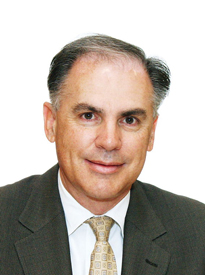The main focus of financial planners and their clients has been on financial capital, but experience shows that you can be very rich in financial capital, but otherwise poor. As a result, financial planners can use a lifestyle approach by adopting the Eight Forms of Capital framework that AppleSeed Permaculture developed to manage clients’ capital in a way that that ensures life and retirement goals are achieved at each stage of their lives.
So, what is this framework and permaculture? Permaculture is based on mimicking ecosystems and understanding how they work together to create resilience in the overall system. For example, think of a spider and its web, in which the variety of web designs give many different utilities to strengthen the overall resilience and survival of the spider’s ecosystem. This can be mimicked to create a human personal system to build resilience against financial volatility and strengthen the path to your goals. This expanded framework puts all forms of capital on equal footing.
Here is a closer look at the eight forms of capital:
- Financial, such as money and investments.
- Material, including houses, cars, and other hard assets.
- Living, which is what we eat, drink and the air we breathe.
- Cultural, or the ability of a group of people to step into a ceremony together.
- Intellectual, such as learning new things, new ways to design and finding new solutions.
- Experiential Capital, which is the actual experience of intellectual learning.
- Spiritual, or what you believe in and your faith.
- Social, including the exchange of influence and connections between people like family and friends.
The objective of the Eight Forms of Capital framework is to better balance all forms of capital that will build and preserve financial capital whereas, conversely, as financial capital grows, it can then be invested to grow other forms of capital and achieve a balance in your clients’ other goals.
Specifically, think of life-long financial and life plans with clients that start out with their lives and financial journeys and then move into their asset-accumulation phase. This then finally enters the pre-post-retirement phase, in which the balance of these forms of capital will need to be realigned at each phase.
In the beginning and accumulation phases, you will want to help clients build resiliency through growth of other capital forms beyond financial to achieve life goals and guard against financial shocks. As clients enter the pre-post-retirement phase, a major realignment of capital will be needed to sustain resiliency and achieve their retirement goals.
In this process, the key is to assess your clients’ strengths in each form of capital and help develop the weaker ones tailored to the lifecycle they’re entering into. This is known as “intereducating.” The overall outcome is to develop a longer-term development pathway for growing the various forms of capital.
Here’s a demonstration of the application of this framework by using three examples, each at a different stage of the lifecycle:
- The graduating student; “I don’t understand the story that I am suppose to live into student debt, homeownership, consume, that is it? What? There has got to be more.” Steering young clients to grow other forms of capital and creating balanced goals while still building financial capital will ensure their other human needs are nurtured and keep these young clients on track, financially.
- The professional: “I am in my mid-thirties. How can I use my other forms of capital to grow my financial capital?” Obtaining a master of business administration (MBA) is an investment in intellectual capital that can help such clients build long-term financial and material capital, but may deplete their short-term financial capital. You can help these clients with a plan that will enable them to obtain an MBA.
- The pending retiree: “I am planning on retiring and think I can retire with better financial, material or living capital somewhere else in a different province or country.” You can use this framework to challenge clients’ capital form balance. Ask them if they really understand the cultural capital of the place they plan to retire to and if they will have any social capital there.
The obtainment of financial capital goes far beyond money and involves the human condition of fulfillment and the need for resilience through deploying these eight forms of capital in balance. By adopting this framework into your engagement process, you can add value and help your clients achieve balance in their lives and retirement goals with the overall goal of growing and preserving their financial capital.
